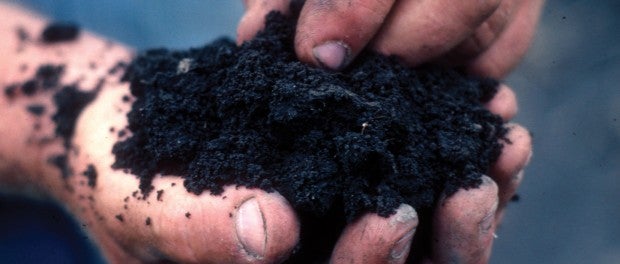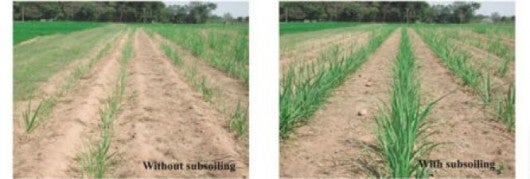The Benefits of Subsoiling Crop Fields

Soil health is vital to the success of any farm, large or small. The state of your soil directly correlates with that which you are able to grow from it. Thus it is worthwhile to give your soil the time and attention it needs. One way to invigorate soil is by subsoiling with a low disturbance tool.
Depending on the region in which your farm is located, you could have one of many types of soils. Some soils are naturally more low maintenance whereas other soils need to be coaxed along by actions such as subsoiling. For example, silty or clay loam soil is naturally prone to compression on its own but this compression increases with the passage of heavy machinery atop it. For soil such as this, subsoiling at a depth of 12 to 18 inches (which is much deeper than a standard subsoiling at 6 to 8 inches) will increase root aeration and give water a place to go, retaining it and giving it better access to crops that need it for survival. This ultimately translates to more nutrient and mineral access by crops, which in turn affects your yield and bottom line.
Even healthy soil can become too tight to allow water access and can benefit from subsoiling. Regardless of if your mineral and nutrient levels are where you want them to be, you could still be faced with a compressed layer of soil known as a plow pan. When this is the case, water will collect on the surface of soil, leading one to believe proper hydration is present. The reality of the situation, however, is that the tight soil prevents water from penetrating it, so all the water you see is unable to reach deep roots to nourish them. Roots themselves often can also not penetrate the plow pan and may grow sideways, which is not good for their health or that of nearby crops. In this case, crops tend to fail to thrive.
As with all things, however, there are pros and cons to subsoiling. For one thing, it is hard work that requires equipment to complete, which in turn raises production costs. Don’t let this get you down though as along with the rising costs comes a rise in yield, largely offsetting the addition expense over time. Subsoiling also saves money by allowing crops to be saved which otherwise might have failed to thrive due to growing sideways or not having access to water and essential soil nutrients.
Before you decide whether or not subsoiling is for you, it is imperative that you take a good, hard look at your soil. Some soil types will benefit from it more so than others, such as those with compaction issues. If you are on the fence about weather this is a process that will prove beneficial on your farm, conduct an experiment in order to sate your curiosity. By subsoiling a small portion of your property, you can conduct a controlled experiment in order to see for yourself if this is something you need. The results could either dazzle or dismay, but the more you know about your soil’s needs, the better you will be able to farm it in the long run.









 Your Privacy Choices
Your Privacy Choices
Leave a comment